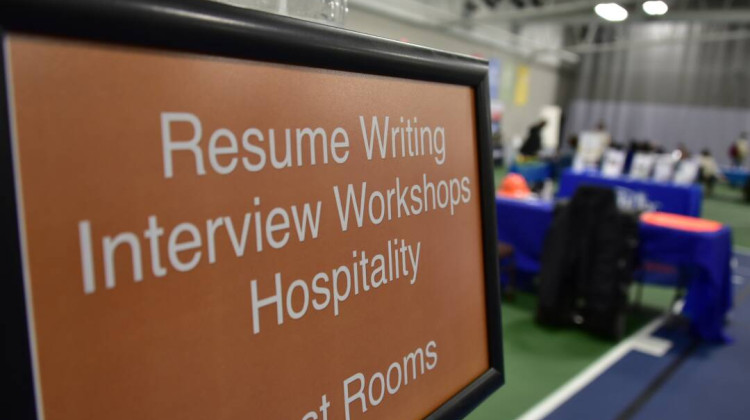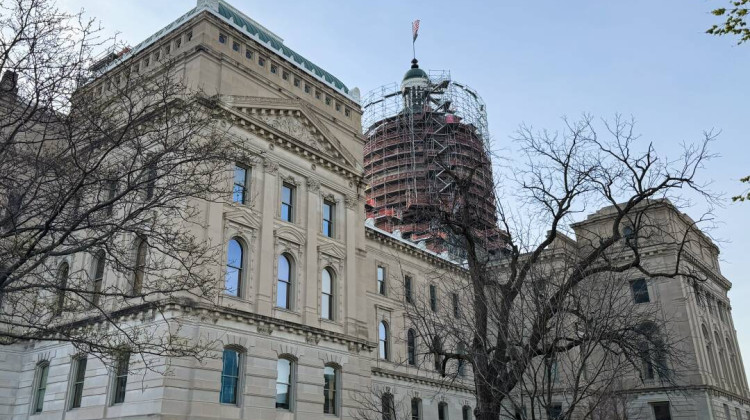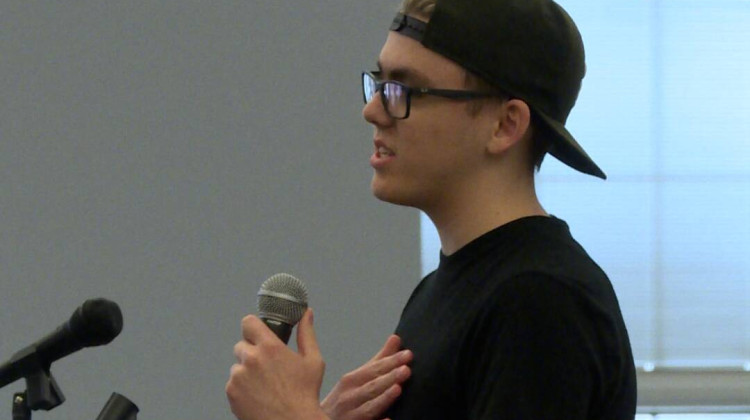A shortage of affordable housing in Indianapolis and across Indiana has put homeownership out of reach for many Hoosiers.
The homeownership rate in Marion County has declined by 7 percent since 2010, according to a 2022 report from the Fair Housing Center of Central Indiana. The decline is even more pronounced in neighborhoods of color.
“People are simply having it harder to find a place and having to pay more for that place,” said WFYI city reporter Jill Sheridan, who has been reporting on Indianapolis’ housing crisis. “The shortage of affordable housing really impacts very, very low-income people.”
Sheridan, along with housing advocates Dee Ross, Andrew Bradley and Aaron Spiegel, spoke with WFYI and Side Effects Public Media Community Engagement Specialist Brittani Howell in a Twitter Spaces conversation Feb. 24. They discussed possible solutions and efforts at the Statehouse to provide protections for tenants.
— WFYI News (@WFYINews) February 24, 2023
What housing issues does Indianapolis face?
One issue that particularly exacerbates Indianapolis’ declining homeownership rate is the presence of large, national investment companies in the city. These large companies own about 15 percent of single-family rental properties in Indianapolis, according to the Fair Housing Center report – five times the national rate.
“We’ve had a lot of trouble holding these companies accountable,” reporter Sheridan said.
Sheridan reported extensively on one of these companies, New Jersey-based JPC Affordable Housing. Earlier this year, JPC agreed to sell three properties after months of refusing to pay utility bills, which threatened residents’ access to water and electricity.
Another recent challenge has been skyrocketing home prices, which shifted the demographics of several Indianapolis neighborhoods.
“We are seeing areas and neighborhoods that are experiencing displacement and gentrification, and again that impacts low-income people disproportionately,” Sheridan said.
The city has proposed several solutions to these challenges: A new program called Vacant to Vibrant will allow community development corporations and nonprofits to redevelop abandoned properties into affordable single-family homes or rentals. The city has also approved using tax increment financing, or TIF, dollars for affordable housing projects.
How have lawmakers addressed housing issues this legislative session?
Several bills filed this legislative session aimed to address housing issues in Indiana.
A pair of bills – Senate Bill 202 and House Bill 1148 – could have helped renters struggling with neglectful landlords. The bills would have allowed renters living in units with health and safety violations to go to court and pay rent into an escrow or trust account until their landlord addressed the issue. Indiana is one of only a handful of states without this type of tenant protection, said Andrew Bradley, policy director for Prosperity Indiana, an association for community economic development organizations.
“We see that that lack of the enforcement of existing health and safety standards Is artificially depleting Indiana's housing supply and increasing costs at a time when everybody's talking about the shortage of affordable and attainable housing," Bradley said.
The Indiana Senate chose to urge lawmakers to further discuss SB 202 during a summer study committee. HB 1148 was assigned to a committee but died without further action. This was frustrating for Bradley, as he knew housing providers and other stakeholders who planned to travel to Indianapolis to share their perspectives.
“I have to say – the issue’s been studied. I have a stack of studies on my desk that get at these very issues,” Bradley said. “The bottom line is neither bill was given a real hearing. Neither bill was allowed to have Hoosiers come in and testify.”
The lack of progress in the legislature was disappointing but not surprising to Rabbi Aaron Spiegel, executive director and president of the Greater Indianapolis Multifaith Alliance, which advocates for affordable housing.
“It is a long-held principle in the Indiana Statehouse that we don’t do anything around housing,” Spiegel said.
Not all housing-related legislation failed to advance this legislative session. Two bills would address specific concerns in Marion County: House Bill 1075 would help the city hold bad-acting, out-of-state landlords accountable for property neglect by clarifying Indiana’s statute on receivership when it comes to commercial properties owned by nonprofits. And House Bill 1157 would allow Marion County to set up new TIF districts especially for housing. Both bills moved on to the Senate for discussion.
Another bill that passed the House and is now in the Senate would allow courts to appoint receivers if landlords do not pay utility bills.
“It's a very small step,” Spiegel said. “But apparently our legislators see that as the solution to all these problems, and it didn’t at all address the evictions problem and the lack of affordable housing.”
How does a lack of affordable housing affect Indiana tenants?
As lawmakers debate solutions to the housing crisis, “residents are fed up,” said Dee Ross, CEO and founder of The Ross Foundation, a grassroots community organization based on Indianapolis’ Far East Side.
“It's inhumane the way a lot of renters in Indiana has to live,” Ross said. “And it’s not just in urban communities – it’s in rural, suburban, small towns.”
Ross said without the protections that legislation could have provided, renters worry if they report housing code violations, they could be retaliated against. And the COVID-19 pandemic showed just how disproportionately housing affordability issues affect Black and Brown renters.
“They don't feel like they are protected. They don’t feel like they are being seen. They don’t feel like they are being valued,” Ross said. “They believe that a lot of property managers and landlords have more power to take advantage of them and put them in a housing crisis situation.”
Ross encourages renters to share their experiences and get involved with advocacy efforts. The Ross Foundation oversees the Indianapolis Tenant Rights Union and recently launched the statewide Indiana Tenants Association.
“There’s a lot of people across the state who are just fed up and tired and they want real change,” Ross said. “And they just want legislators to say, “Hey, put yourself in our shoes. Is this right or is this wrong?’”
Listen to the full conversation on Twitter Spaces.
This Twitter Space was created in response to community feedback around housing accessibility and habitability issues, collected by Side Effects Public Media’s Brittani Howell and Indiana Public Broadcasting's Robin Tate Rockel. You can read more about their housing community engagement work here.
Contact digital editor Lauren Bavis at lbavis@wfyi.org. Follow on Twitter: @lauren_bavis.
 DONATE
DONATE







 Support WFYI. We can't do it without you.
Support WFYI. We can't do it without you.